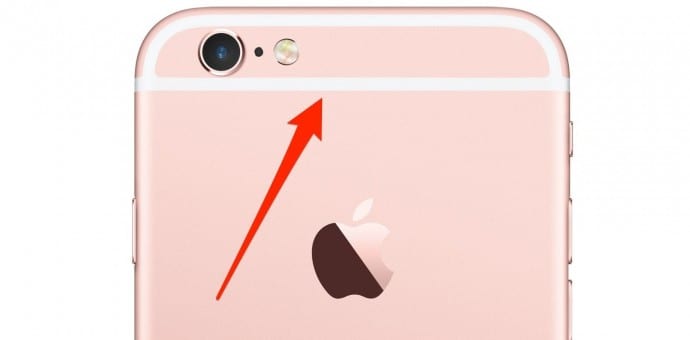Have you ever wondered what those horizontal lines across the back of your iPhone are? Find out why
When Apple took the wraps off the totally redesigned iPhone 6 and 6 Plus last September, the most notable thing on the back of these iPhones were plastic-like lines that runs across the top and bottom of the device.
The lines are white on the gold and “rose gold” iPhone models, and gray on the silver and “space gray” models.
It was discovered that the stripes are in fact the smartphone’s antennas, which are very significant as that’s how the device communicates with the network.
These aerials cannot be hidden inside the handset, because the smartphone’s all-metal construction would stop the emission of the radio waves, averting the antennas sending and receiving information.
In its place, Apple decided to cover the antennas in plastic, through which the radio waves can pass, and stick them on the outside.
When the iPhone 6 was released, tech design geeks questioned whether deceased Apple co-founder Steve Jobs would have allowed the “not aesthetically coherent” plastic bands .
“Antennagate”
Antennas have posed problems for Apple before. The iPhone 4 suffered from reception problems when users held their smartphone “the wrong way”.
In that case, the problem cropped up when you by chance joined the gap between the smartphone’s exposed antenna and its metal chassis.
As luck would have it, this appeared to be a result of Apple’s attempts to enhance reception by expanding the antenna in that model.
Rumours suggest that Apple may have been sensitive to criticism of the iPhone 6, and alleged leaks have hinted that the company will eliminate the unattractive bands in the new iPhone 7.
How will they hide the antennas and keep a metallic case?
The tech giant in a recently filed patent application have provided an explanation as to how they would substitute the aluminium case with a metal compound that is transparent to radio waves but looks and feels like metal. By doing this, it will not only allow the antennas to be hidden away, but also likely spare the sensitive design geeks from any more ‘visible antenna rage’.

